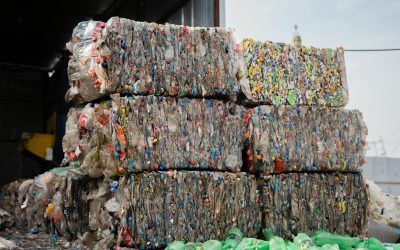Construction and demolition (C&D) waste materials are generated in new construction, demolitions, and renovations. C&D materials contribute heavily to the United States waste stream. In fact, the EPA reported that 569 million tons of C&D waste was created in the U.S. in 2017. That’s more than double the amount of municipal solid waste.
Reducing the disposal of C&D materials is important in protecting the environment, conserving landfill space, and reducing economic strain on waste processing facilities. We’ll share several strategies for reducing C&D waste.
Practice Deconstruction Before Demolition
Deconstruction, unlike demolition, involves the process of “unbuilding” a house or structure. This can take the form of selective, or “soft”, deconstruction, which involves removing easily identifiable, high value materials. Deconstruction can also be accomplished through a “whole-house” approach. In this process, the entirety of the structure is dismantled to identify the largest amount of salvageable materials.
Deconstruction allows for higher value materials like doors, windows, plumbing fixtures, tiles, and lumber to be re-sold. Additionally, deconstruction helps reduce the amount of toxic materials and dust that are released when buildings are demolished.
Order the Right Amount of Materials
Plenty of C&D waste can be reduced simply by proper planning before beginning a job. This includes ensuring that the right amount and the right size of materials have been ordered.
Excess materials like lumber, drywall, and concrete may end up going to waste. That’s why it’s important to get the right quantities for the job. In the event that you have excess material, try finding ways to reuse that material.
Reuse or Donate Salvageable Materials
Find ways to reuse materials before simply tossing them into the dumpster. For example, larger sections of scrap drywall can be used as filler and unstained or painted scrap wood can be chipped and used as mulch. Also consider donating building materials to organizations like Habitat For Humanity.
By reusing building materials from construction and demolition projects, natural resources can be preserved and less waste generated. This puts less of a strain on the solid waste stream and the recycling industry. Oftentimes, reuse of certain materials, including older lumber, can prove profitable for demolition and construction companies. Today there is a larger demand for salvaged and reclaimed wood.
Recycle Materials That Cannot Be Reused
One of the most effective ways to reduce construction & demolition waste is to properly recycle it. The EPA recommends a number of tips for recycling C&D waste. They recommend identifying building components which can be easily recycled, including:
- Asphalt, rubble, and recycled concrete
- Wood & lumber scrap
- Metals including steel, copper, and brass
- Even cardboard packaging can be recycled from construction sites
All of these materials can be sent for recycling and, once properly sorted, can be used in a number of ways. Recycling of building materials continues to be increasingly economically viable and, perhaps more importantly, an environmentally sound practice.
C&D Waste Recycling With the Freedom Disc Screen
While mechanical separation of construction and demolition waste materials is a vital part of proper recycling, it can prove challenging. Many traditional screening solutions are unable to stand up to the demands required for the separation of urban and industrial waste. Fortunately, AEI has a modern, efficient C&D waste recycling equipment solution: the Freedom Disc Screen.
The Freedom Disc Screen was designed to meet the demands of screening even the most difficult C&D debris materials. Its robust construction reduces wear and helps prevent materials from clogging, wrapping, and blinding the screen. Request a quote online to learn more about the Freedom Disc Screen.


